I had a friend who served in combat in Europe from D-Day through to the end of the war. Like most all of those old heroes, he is gone now. However, the stories he could tell…
Mr. P was a farmer, a man of the earth. He invested his entire adult life raising his family, loving his neighbors, and glorifying God. He was the very image of a Southern Christian gentleman. The man was meek, humble, and generous. However, in his youth this stately old grandfather was a cold-hearted professional killer.
Mr. P had absolutely no use for the Waffen SS. In fact, he said, to his recollection, he and his fellow grunts never took an SS man prisoner. To hear him tell it, those SS guys earned that.
One of the more disquieting practices of the SS was that they would often post a two-man sniper team as a stay-behind element as they retreated from an area. G.I.s who were tasked with clearing an unfamiliar space would carefully advance only to find that these SS snipers would kill a handful of Americans before departing just for meanness. Mr. P said they came to expect it.
The Story
When first I met Mr. P he took me out to his barn. The man dropped out of school at a young age to keep his family from starving during the Great Depression, yet he restored old steam engines for fun. Like many of his generation, the guy was a mechanical savant. Hanging on a nail among all of those meticulously organized tools was an old German coal scuttle helmet. The SS runes on the side were faded but obvious. What made the antique stalhelm remarkable, however, was the .30-caliber hole that poked clean through from one side to the other.
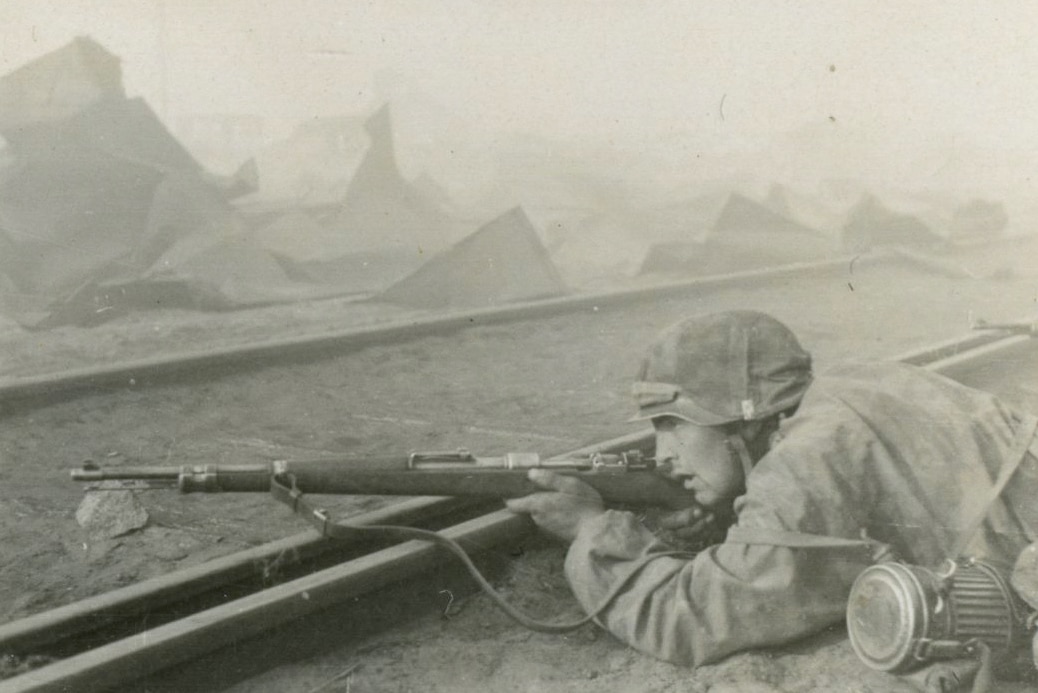
Mr. P’s unit was tasked with securing Orly Airport outside of Paris. This is one of two major airports serving the Paris area today. His commander held the unit up short of the front gate. This objective just seemed too juicy for the krauts to have abandoned without a fight.

Mr. P and another redneck Mississippi guy then slipped off ahead of the main body to recon the space. They carefully ascended one of the taller hangars and set themselves up on the roof. Peering across the airfield structures with the eagle eyes of youth, they spotted what they came for. Perched on another hangar was the obligatory SS sniper team. The German marksman and his spotter were both fixated on the front gate. They had no idea that Mr. P and his buddy were there.
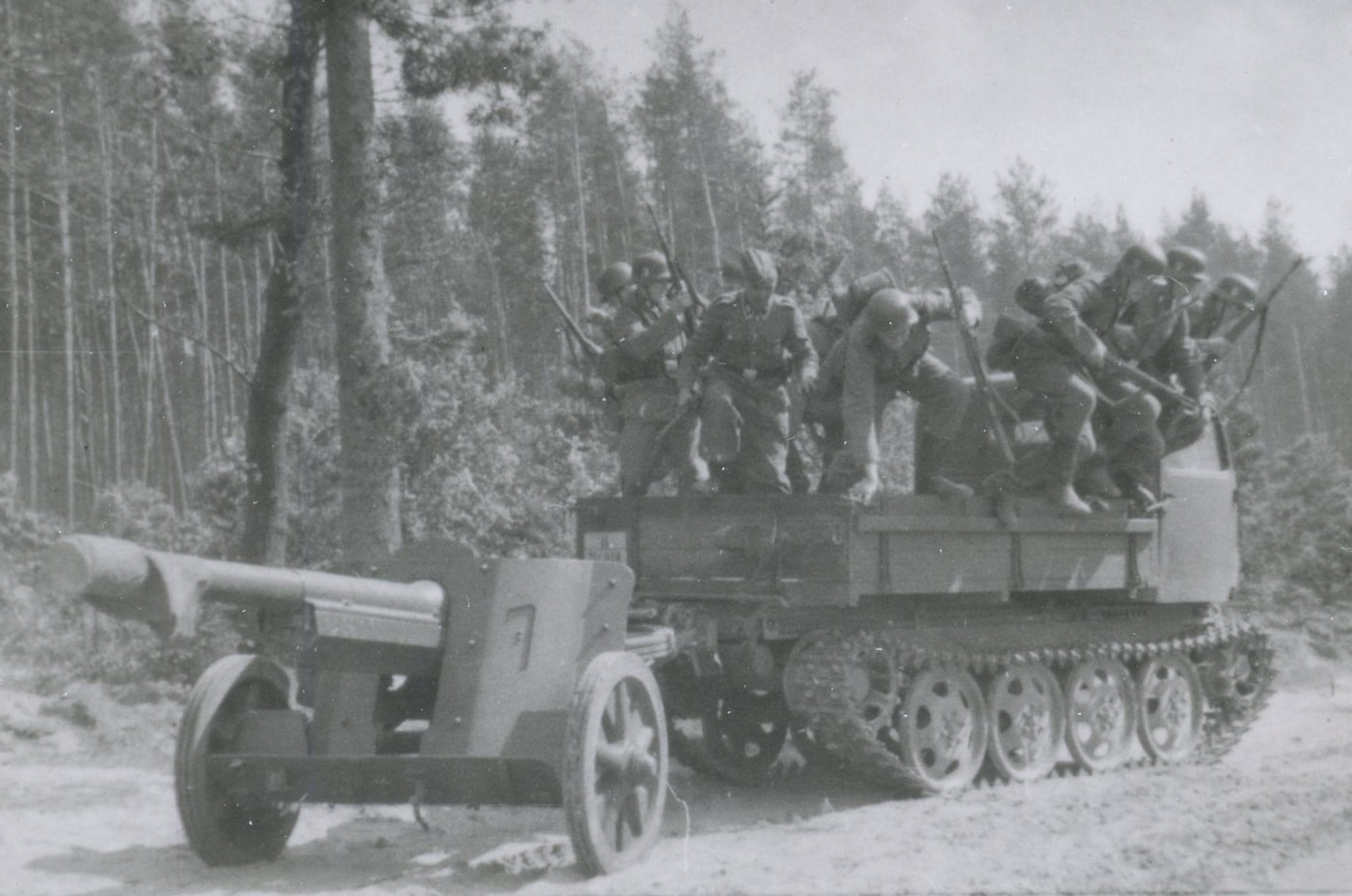
Each American G.I. drew a careful bead with his M1 Garand rifle. On a three count, the two young Americans fired simultaneously, killing both Germans. In the gory aftermath, Mr. P retrieved the dead man’s helmet, cleaned it up, and shipped it home. That helmet with its distinctive hole remained hanging from that nail in his barn for decades. It is in a small local museum today.

The weapon that hapless German sniper wielded was a scoped version of the Mauser Kar98k bolt-action infantry rifle. The Kar98k was a shortened carbine variant of the same rugged Gewehr 98 that carried the Kaiser’s legions through World War 1. The Kar98k served as the standard infantry weapon for both the Wehrmacht and the Waffen SS throughout WWII.
Karabiner 98k Origins
Adopted in 1934, the Karabiner 98 kurz was an evolutionary development of the same Gewehr 98 bolt-action rifle that carried the Kaiser’s armies through World War 1. The nomenclature literally translates to “Carbine 98 Short.” The abbreviated 23.6-inch barrel also drove the adoption of a specific cartridge.
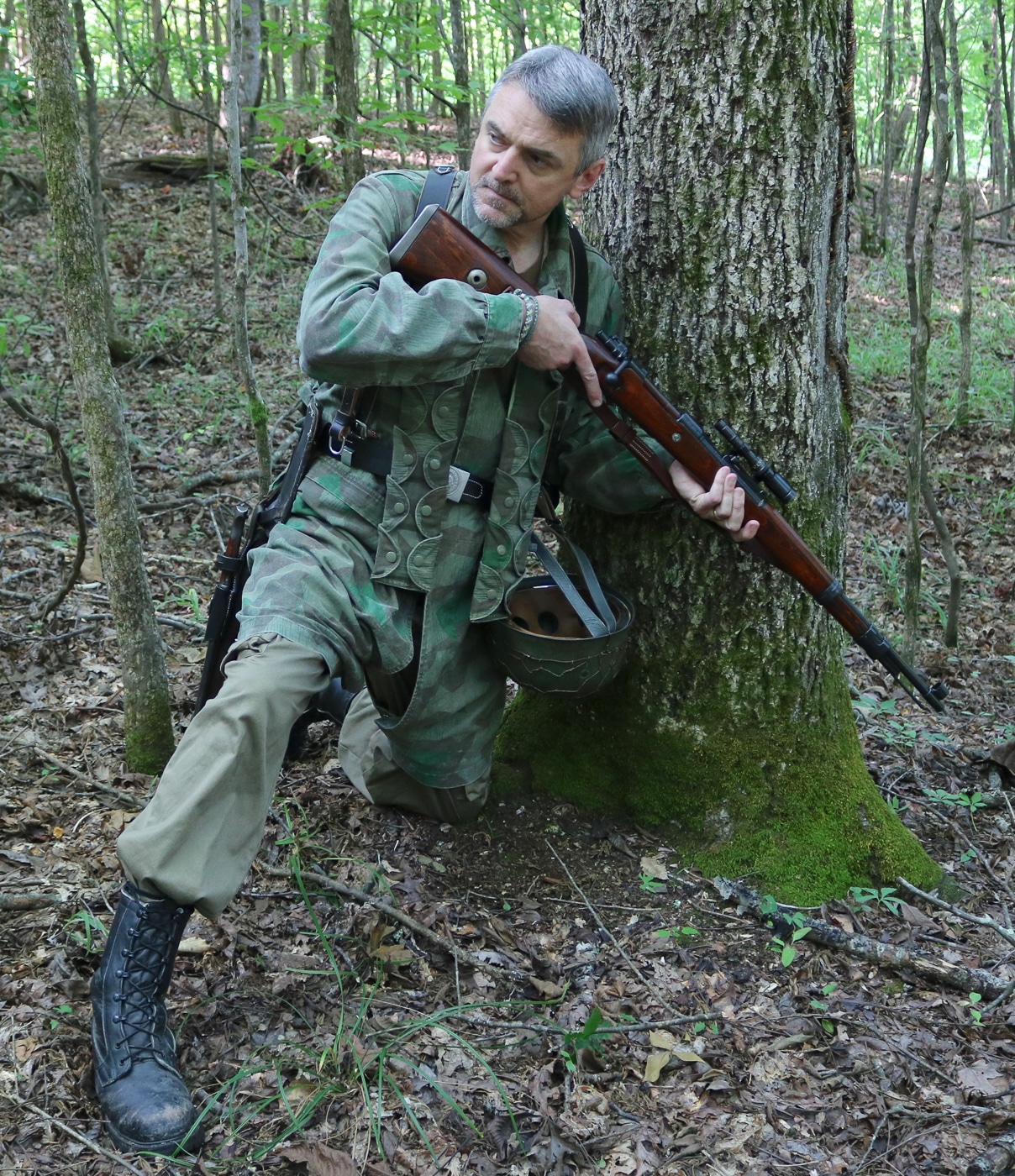
The WWI-vintage G98 fired the 1903-pattern 7.92×57mm Mauser S Patrone. However, this round was found to produce excessive muzzle flash from the shorter Kar98k barrel. As a result, the Germans adopted the 7.92×57mm Mauser s.S. Patrone in 1933. This new cartridge used the same case but offered diminished muzzle flash and improved accuracy out of the shorter Kar98k tubes.
The Kar98k is a controlled-feed design based upon the proven Mauser M98. That means the extractor snaps over the cartridge rim as the round comes out of the magazine, controlling its orientation throughout the feeding cycle. The gun’s internal magazine holds five rounds, and it is typically loaded from the top via stripper clips. The strippers are considered disposable once the weapon is charged.
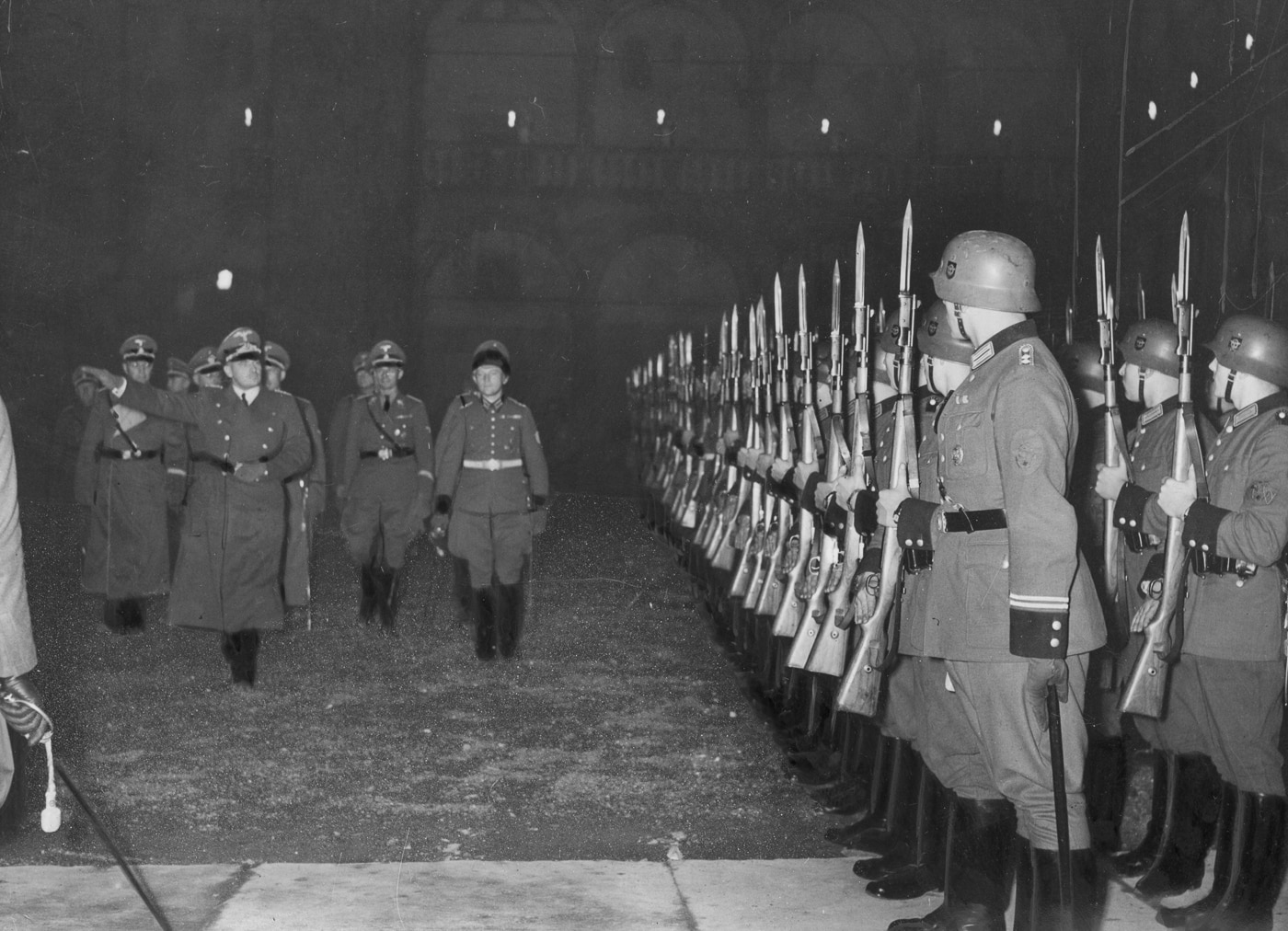
Unlike the previous Gewehr 98, the bolt handle on the Kar98k is turned down. This reduces the effort required in cycling and allows the rifle to be fitted with an optical sight. Early examples were blued. Later versions produced from 1944 onward were Parkerized. Between 1934 and 1945, the Germans produced some 14,600,000 copies.
Each weapon comes with a short length of threaded cleaning rod secured underneath the barrel. As with most bolt-action military rifles, maintenance is pretty straightforward.
There is a bolt release latch on the left side of the receiver. To disassemble the rifle, just retract the bolt, pull up on that latch and remove the bolt assembly to the rear. That’s really about all there is to it.
The Kar98k comes fitted with a tangent leaf rear sight corresponding to a fixed front barleycorn. Guns made after 1939 included a pressed steel front sight hood. The rear sight is graduated in 100-meter increments out to 2,000 meters.

Early Kar98k stocks were conventional one-piece designs. Starting in 1937, the rifles were fitted with laminated plywood stocks. These stocks were cheaper and more robust than the solid sort. Laminated stocks incorporate a stamped steel cup buttplate and a sling slot. Period commentary from WWII claimed that most Kar98k stocks that failed, failed through that slot. There is a round fitting in the butt that can be used to disassemble the bolt. The Germans also ran steel rods through these holes and used that to secure multiple rifles together in racks.
Accessorizing the Kar98k
The Germans fielded a mean bayonet with the Kar98k. They also produced a cup-style grenade launcher called the Schiessbecher, or Gewehrgranatengerät, along with a dedicated cleaning kit with a pull through. Later versions of this launcher would also fit the G98/40, the MP44, and the FG42 rifles as well. Special grenade launching rounds launched wooden bullets that would automatically prime the grenades upon firing.
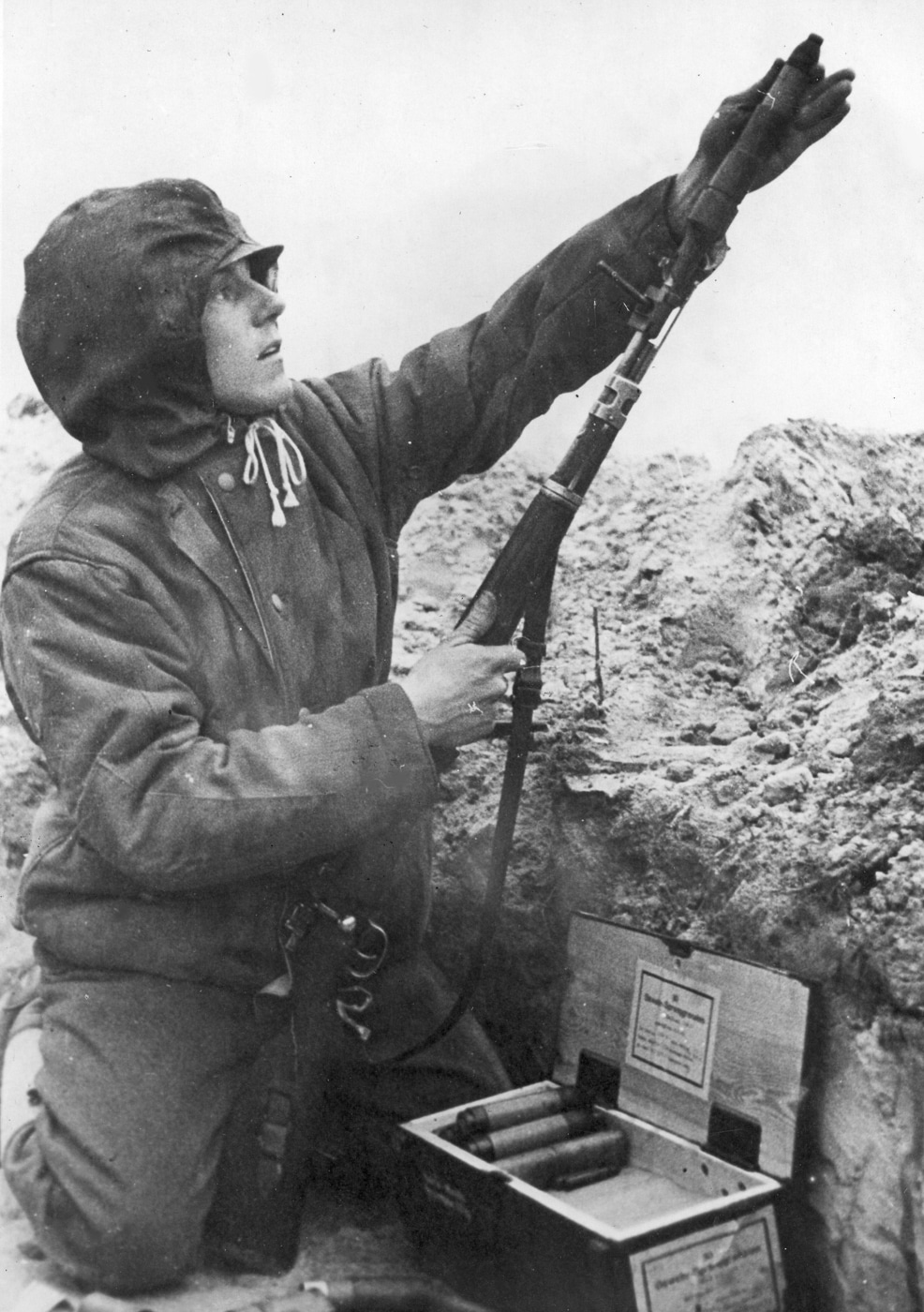
The Germans designed a curious prototype sound suppressor for the Kar98k called the HUB-23. The corresponding subsonic cartridge was called the Nahpatrone or “Near Cartridge.” This combination supposedly diminished the rifle’s report by about 75%.
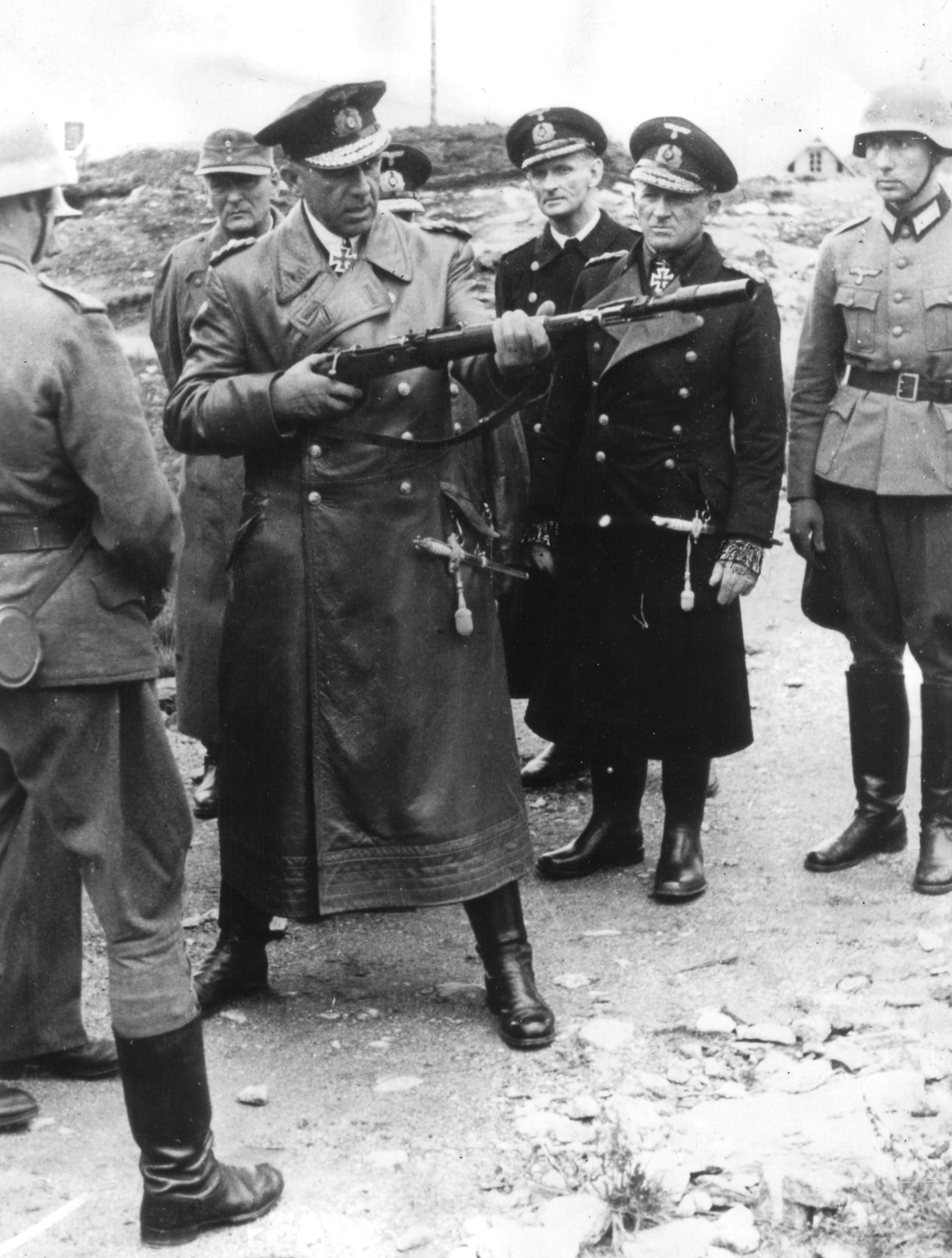
There were three major optical sights used with the Kar98k. The ZF41 scope was a curious 1.5X long eye relief optic that mounted to the rear sight base. While the concept was sound, the optic’s small size and limited eye relief made it like shooting through a tube of Chapstick. They produced around 100,000 copies, but the ZF41 was not terribly popular.
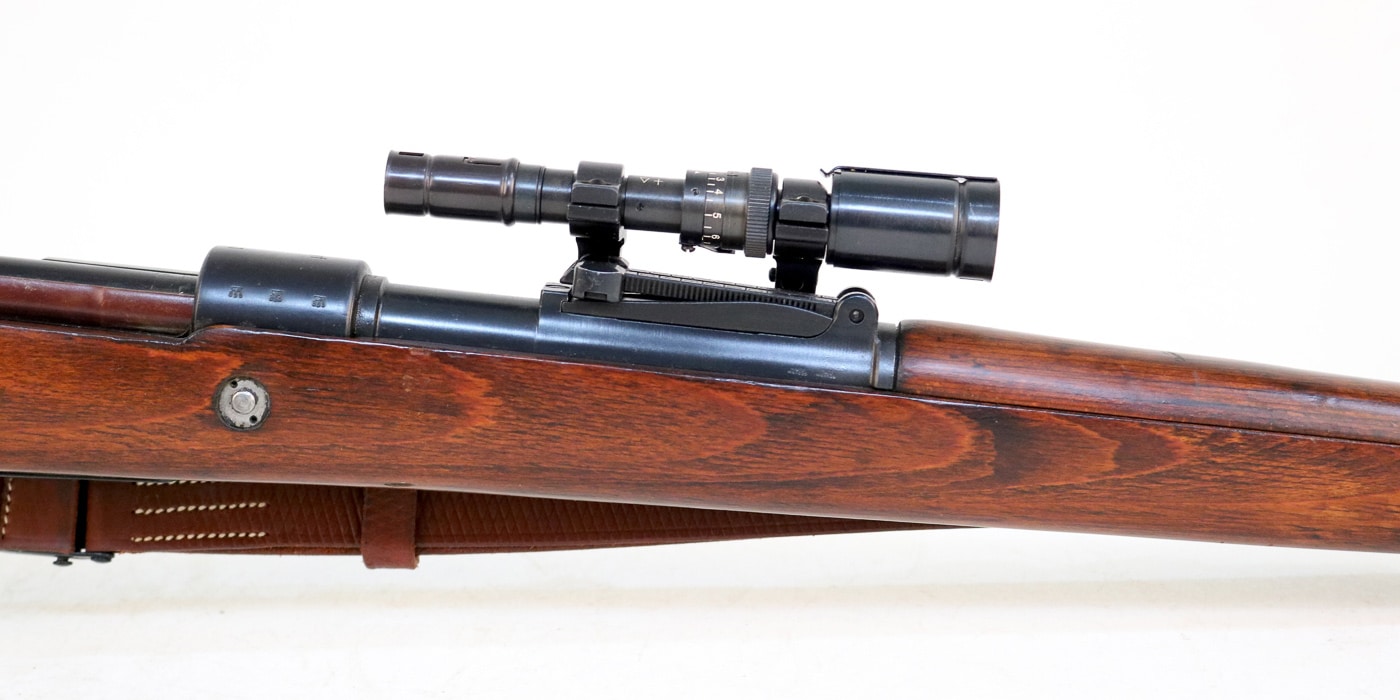
The ZF4 was a much more utilitarian optic that was also used on the StG44 and FG42 rifles. This 4X sight featured a post-type reticle and was not fundamentally dissimilar from modern combat optics used today. It was inexpensive to produce and quite effective.

The Zeiss ZF39 was a 4X optic that utilized a distinctive turret mount. In addition, many Kar98k rifles were hand-fitted with a variety of civilian optics as they came available. As a result, there was very little standardization.
Ruminations on the Karabiner 98k
The Kar98k was really obsolete by the time WWII broke out. The American M1 Garand offered significantly greater firepower, and the subsequent StG44 represented a quantum leap forward. However, once WWII really got energized, the Germans never quite caught up. Around-the-clock strategic bombing played an outsized role in that problem. The Kar98k was nonetheless a superb bolt-action infantry rifle for its day.
Special thanks to www.worldwarsupply.com for the replica period gear used in this project.
Editor’s Note: Be sure to check out The Armory Life Forum, where you can comment about our daily articles, as well as just talk guns and gear. Click the “Go To Forum Thread” link below to jump in!
Join the Discussion
Featured in this article
Read the full article here


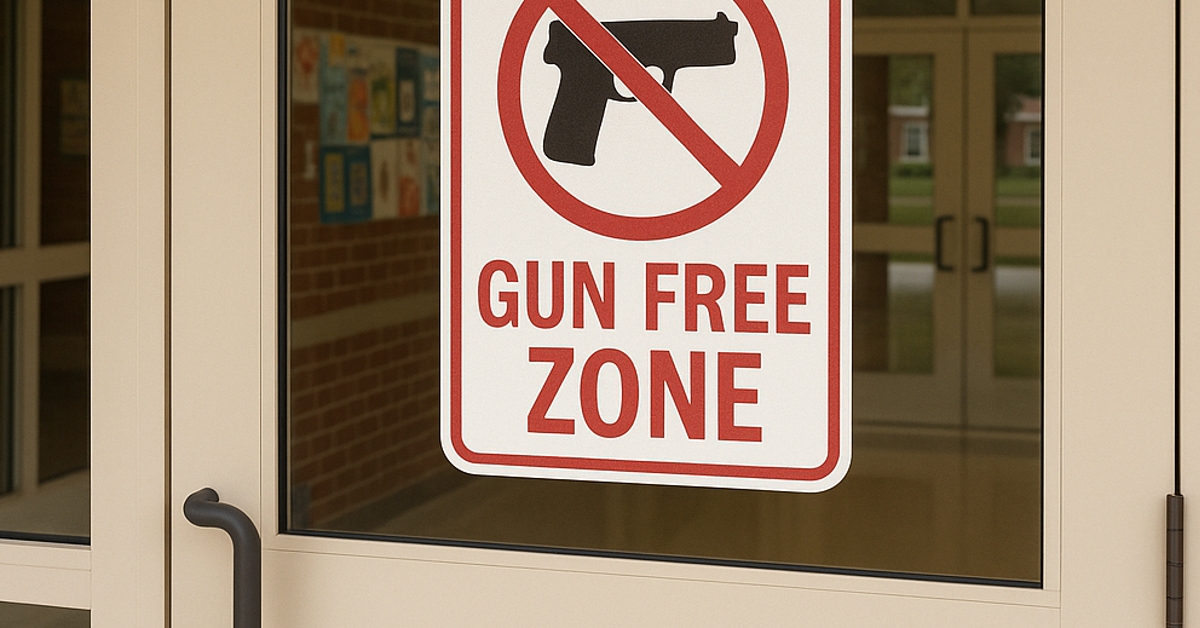




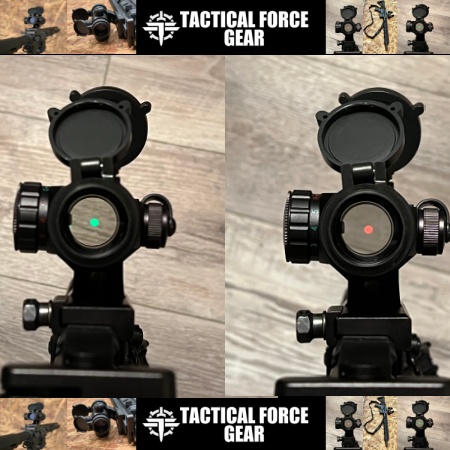







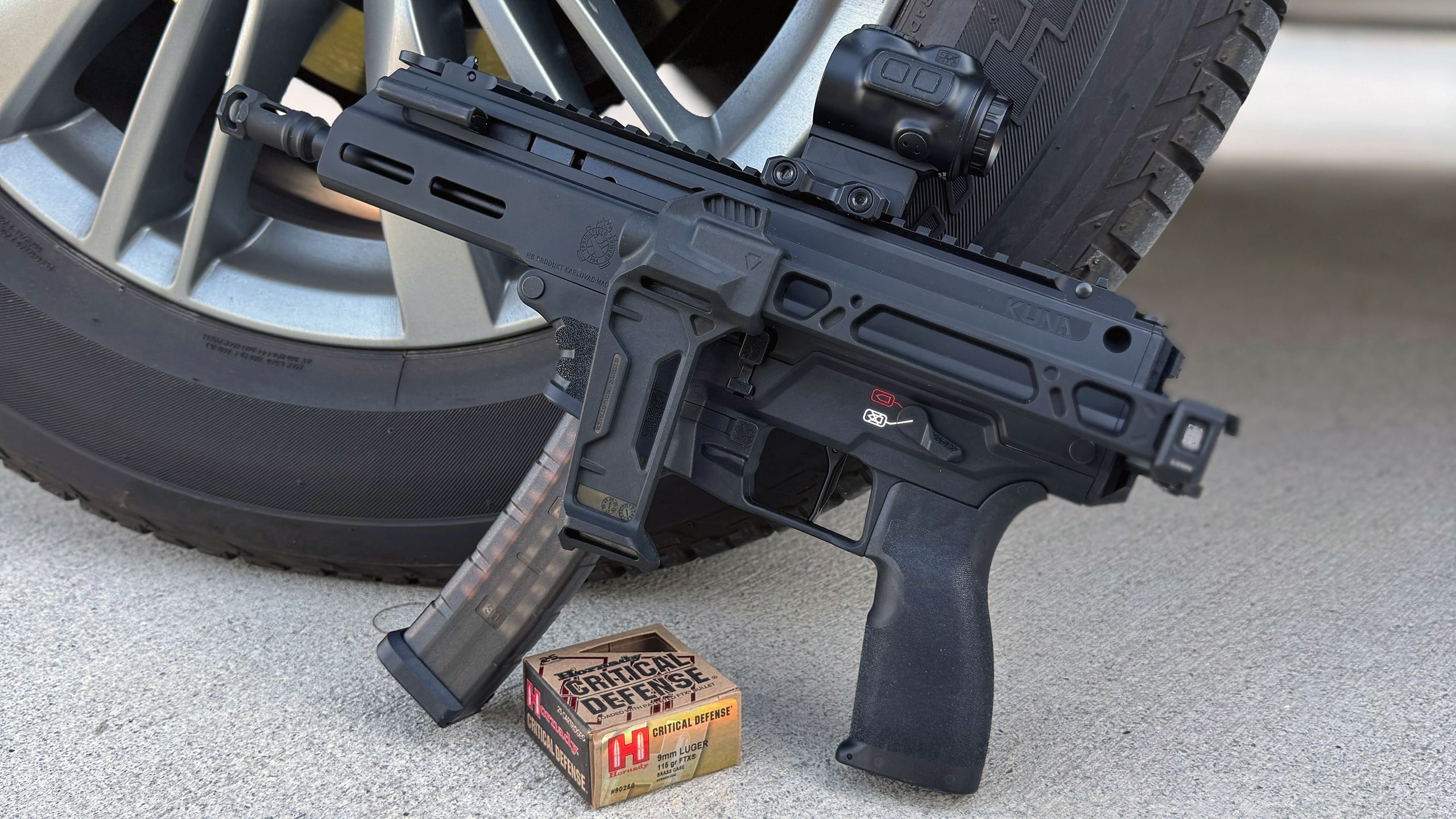


Leave a Reply